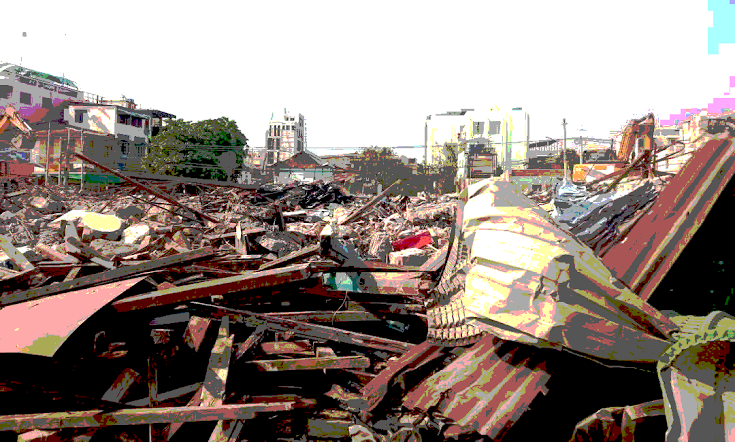“Myanmar Spring Chronicle – April 25 Overview”, published by MoeMaKa on April 26, 2025:
One Month After the Earthquake: Myanmar’s Ongoing Struggles
It has been nearly a full month since the March 28 earthquake—a 7.7 magnitude quake, followed shortly after by a 6.8 aftershock. As Myanmar approaches the one-month mark, the wounds of the disaster remain raw.
In the first 72 hours after the quake, some emergency rescues were conducted with the help of international search-and-rescue teams, local firefighters, and volunteer organizations. However, the scale and sufficiency of the response were limited.
Disaster Within Conflict
Myanmar was already fractured by civil war, deep social divisions, and the presence of over a million internally displaced people (IDPs) when the quake hit. Resources were already strained, with the junta prioritizing military spending over social services.
Facing the worst earthquake in nearly a century, Myanmar had little preparedness, unity, or resilience left to mount an adequate response.
Control and Relief Dynamics
Although some NUG leaders assert that the junta controls only 20% of Myanmar’s territory, the regions hardest hit by the earthquake—including Mandalay, Sagaing, Kyaukse, Naypyitaw, Pyinmana, Inle, Yamethin, Pyawbwe, Wundwin, Myitnge, and Pyin Oo Lwin—were all junta-controlled cities.
Thus, despite broad resistance control elsewhere, most international aid had to be funneled through junta-held areas.
The Junta’s Priorities
Since the earthquake:
-
The junta has not mobilized its military for major civilian rescue efforts.
-
It has not allocated significant emergency funding for earthquake recovery.
-
Instead, it prioritized repairing military command centers and continuing airstrikes.
Civilian government staff and their families remain largely neglected, many living under makeshift tents even a month later, exposed to the harsh heat (over 40°C) and impending monsoon floods.
Civilians Left Behind
Tens of thousands of civilians are still:
-
Living in temporary shelters
-
Without adequate sanitation, clean water, or medical support
-
Facing the threat of health crises as the rainy season approaches
Even many urban residents—who still have standing homes but lost their jobs due to economic collapse—are struggling to survive.
Despite public donations and international pledges (such as China’s promise of 1 billion yuan in humanitarian aid), the junta’s relief distribution has been slow, insufficient, and opaque.
The Unanswered Questions
As nearly 4,000 people have been confirmed dead, and countless others have lost homes and livelihoods, pressing questions emerge:
-
What plans does the junta have for survivors?
-
How will communities rebuild amid war and disaster?
-
What role can resistance forces play in aiding the people?
Meanwhile, Myanmar’s ordinary citizens—already battered by civil conflict—must now find ways to survive and rebuild amid devastation layered upon devastation.

